Manufacturer: Logitech
What is the Logitech Harmony Elite?
You’ve just got home. You've had a long, boring day. It’s cold and dark outside. You just want to curl up on the sofa, turn up the heating, dim the lights and relax with some Netflix or mood music. The Logitech Harmony Elite will do all that at the touch of a single button.
It’s a universal remote, but one for the smart-home generation. Sure, it controls your TV and AV equipment like other universal remotes, but with Wi-Fi and Bluetooth it's able to control other smart devices too. Philips Hue, Sonos, Nest, Samsung SmartThings all work, to name just a few. It’s pricey, but it’s a must-have gadget for any smart-home adopter.
image: http://img.worldinout.com/img/201512/15/161049764.png
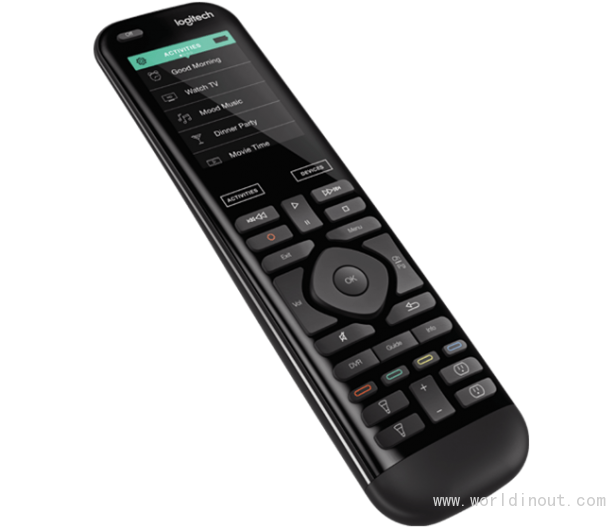
What’s good about it?
Logitech is good at making things and the Harmony Elite is a reminder as to why. It just feels right. It’s weighted perfectly, the coarse plastic rear is pleasantly grippy, and the buttons have a defined click. A 2.4-inch touchscreen adds contextual information, such as shortcuts to channels with their logos, when watching TV.
It’s a decent start, but there’s more to the Harmony Elite than the remote alone. Included in the box is the charging dock – the remote uses built-in rechargeable batteries – and the Harmony Hub. The latter is important, since it's this unit that handles communication with other devices – for instance, those not controlled by infrared.
The Harmony Elite is simple to set up. This is in marked contrast to previous Harmony devices, which required you to plug the remote into a PC every time you wanted to change the settings. It was painful, particularly if you were struggling to get something working.
Thankfully, someone invented the smartphone. Logitech’s excellent Harmony app walks you through setting up devices and the settings sync wirelessly. Logitech’s database of TVs, AV systems and beyond is huge. I had my TV, AV system, Apple TV, PS4 and Philips Hue lights all set up in 30 minutes.
image: http://img.worldinout.com/img/201512/15/161049634.png
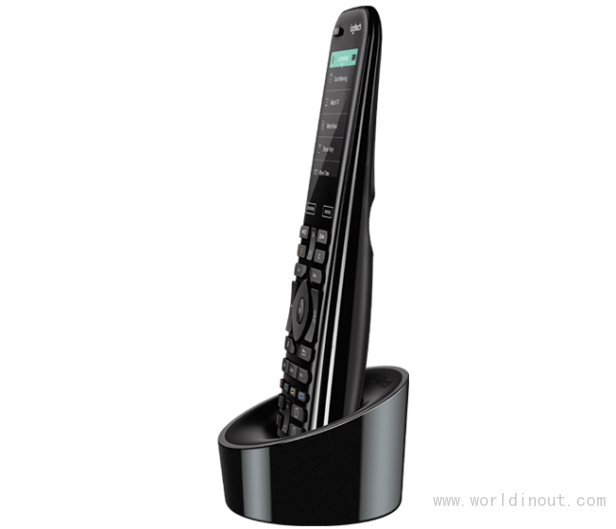
once you’ve added your devices you can build activities that combine several actions into one. For example, "Watch a Film" could mean turning on your TV, setting it to HDMI 1, turning on an AV system, selecting the correct input, turning on a Blu-ray player or console, and setting your Hue lights to a specific colour and brightness.
The only problem I encountered was with my onkyo receiver; the Harmony seemed to think it had more inputs than it really did. It took 5 minutes to work out how to edit the inputs in the Harmony app, but this was the only problem I encountered using the app.
The beauty of this system is that you can use the app as your remote. In fact, you can buy the Hub alone and just use your phone if you prefer – it’s cheaper – but the remote is worth having if you can afford it.
All this makes using a complicated home AV system much easier. Moreover, once set up, it’s faultlessly reliable. This means that luddites in your home will easily cope with one remote, and won’t have to troubleshoot problems because the remote didn’t do its job – a common problem with older universal remotes.
The smart-home connectivity just seals the deal. In many respects, Logitech’s system is the "smart home" hub that’s been missing up to now. In one remote, or app, you can bring together so many devices into a single, reliable system.
image: http://img.worldinout.com/img/201512/15/161049404.png
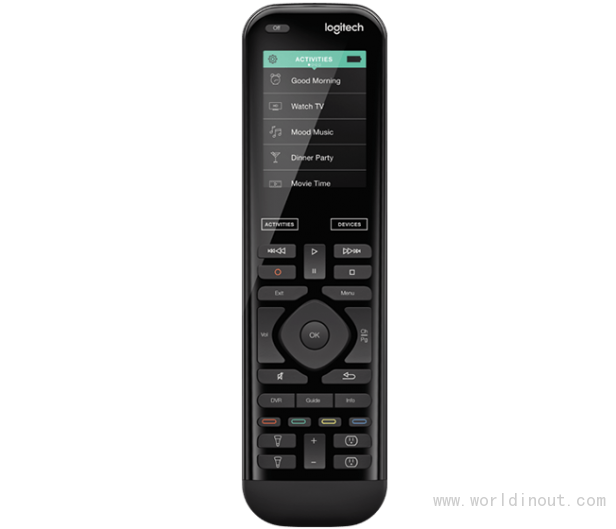
IFTTT (If This Then That) support extends options way beyond the officially supported ones. A fun example is using a sleep tracker (for example, a Jawbone Up) to trigger your TV to turn on when you wake up.
As for official support, TVs and AV support extends across 270,000 products from 6,000 brands. All the major games consoles are supported, although you can’t turn on a PS4 using the remote due to Sony’s restrictions – the remote turns it off fine, though.
Logitech has a good compatibility section on its website, but it natively supports August Smart Locks, Ecobee thermostats, Honeywell thermostats, Insteon, LIFX smart lights, Lutron wireless window shades and lights, Nest Learning Thermostat and Protect, PEQ, Philips Hue, Rheem water heaters and SmartThings.
That, combined with the AV support and IFTTT, covers a good chunk of the most popular smart accessories out there.
image: http://img.worldinout.com/img/201512/15/161049704.png
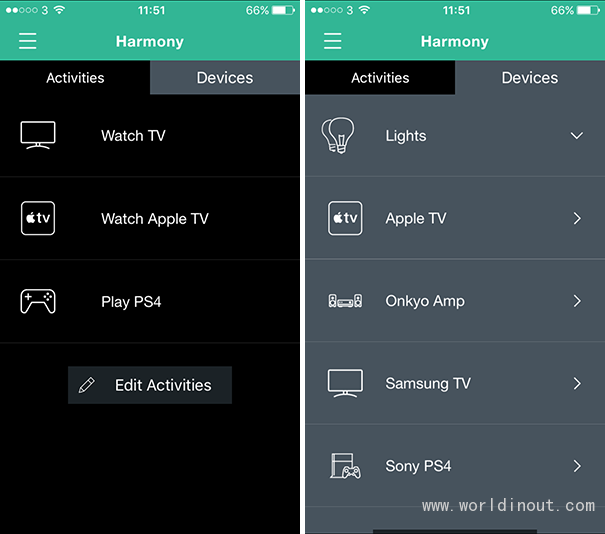
What’s bad about it?
While native device support is strong, the Harmony Hub can’t directly control ZigBee or Z-Wave smart-home products – Osram Lightify, Yale smart locks and so on, for example. Support for Samsung SmartThings gets you part of the way, since it can control those devices, but it’s a little cumbersome that way.
Logitech has launched the Harmony Hub Extender in the US and Canada to solve this problem. It can control ZigBee and Z-Wave products, but this extra box costs $99 and there’s no word on a wider release just yet. This is a typical "smart home" problem at present, though, and Logitech does a better job of making sense of it all than most.
image: http://img.worldinout.com/img/201512/15/161049914.png
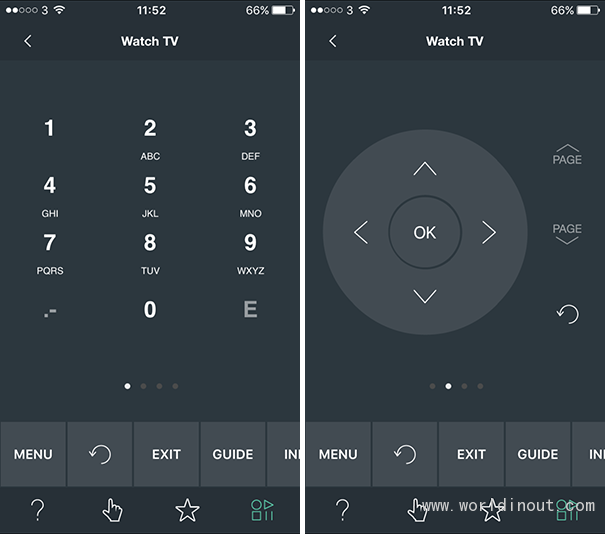
My other complaint concerns occasional frustrations with the 2.4-inch touchscreen. It’s mostly reliable, but sometimes there’s a delay between choosing an action and a new set of options appearing.
For example, early on I often turned off my TV by accident because I pressed the screen twice thinking the first press hadn’t registered.
I got used to this, though, and it’s only a problem when you want to control a secondary device – for example, changing picture settings while using an Apple TV, or switching on Game Mode when playing on a games console.
As problems go, it’s trivial, and in every other respect the remote performs flawlessly.
image: http://img.worldinout.com/img/201512/15/161049964.png
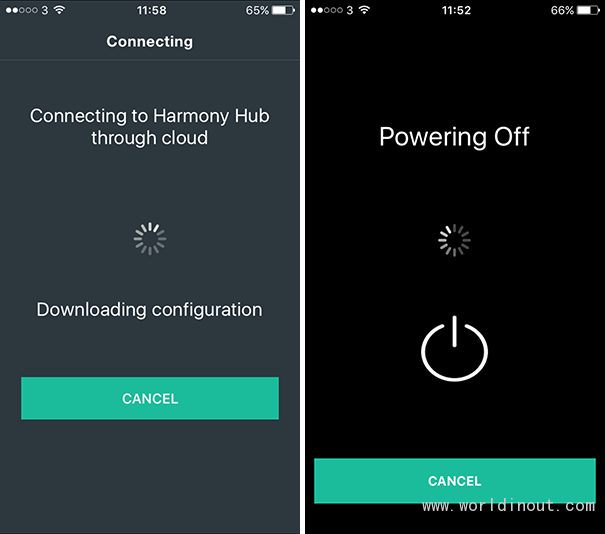
Other Things to Consider
Wonderful although it is, the Harmony Elite is rather expensive. It’s good enough to justify that price, but that’s slim comfort if you can’t justify the expense to yourself (or significant other). But that needn’t hold you back, since the Harmony system is modular.
For example, the Harmony Companion includes the Hub and a cheaper remote that doesn’t have a screen – it’s £120. Alternatively, if you don’t mind using just your phone to control everything, you can buy the Harmony Hub for £100. The beauty is you can still buy the remote, the Harmony 950, later on if you decide you want it after all.
For those with AV cabinets, two IR extenders are included in the box, so you can still control your devices even if they’re concealed. This works fine. You can even control your AV gear remotely using the smartphone app and a cloud server connection, which might prove handy if someone needs help using the system.
Finally, there’s no Apple HomeKit support here. Saying “Watch a movie” to your phone would be damn cool, but adding it would increase the cost due to Apple’s hardware requirements.
image: http://img.worldinout.com/img/201512/16/140853724.png
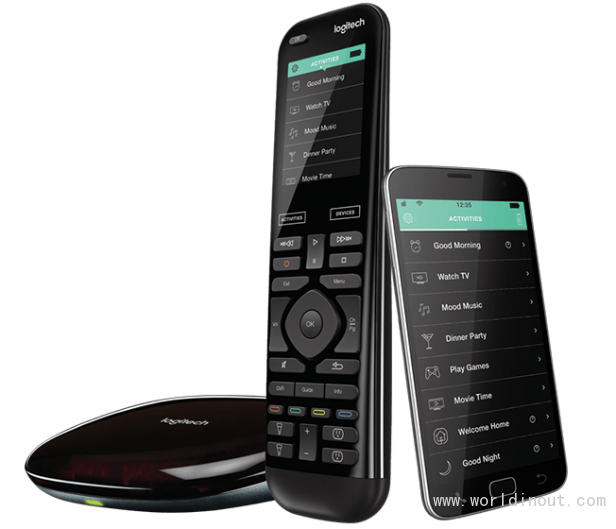
Should I buy the Logitech Harmony Elite?
I can’t imagine living without the Harmony Elite anymore, which is recommendation enough. That doesn’t mean everyone should rush out and buy one. However, it’s the best (and only) way to make your home AV system and smart home work together.
In fact, it’s great even without the "smart" features – although it’s harder to justify the price without them. If the price is the sticking point, cheaper Harmony Hub alternatives do the same for less.
There’s no finer way to consign your old remotes to a dusty, forgotten drawer.
Verdict
This is the missing link in any serious smart-home project.






